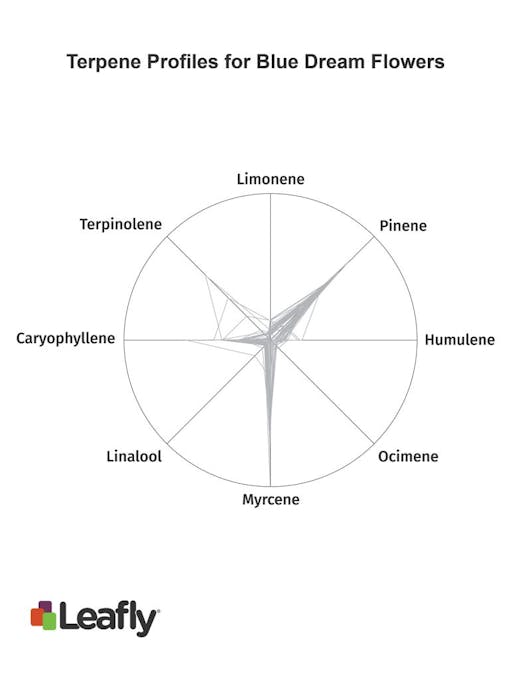Finding consistent, repeatable experiences with cannabis is a challenge that every consumer faces. Even the most experienced cannabis connoisseurs can struggle to find the right dose of the right strain with the right chemical composition.
Once you’ve found a strain you enjoy, the challenge continues when you return to the dispensary looking to recapture that experience. Two strains bearing the same name can vary from grower to grower, and any difference in the chemical makeup can sway the experience in any number of directions.
Which is why finding reliable strains that are accurately labeled is paramount to replicating the enjoyment and benefits cannabis provides. When shopping for a specific strain, the strain name is one of the few pieces of information that consumers have to depend on.
But exactly how reliable are strain names? If you pick up two distinct products that share the same strain name, how similar will they be? Let’s find out.
What Does ‘Reliability’ Mean in a Cannabis Strain Name?
Strain name reliability—that is, confidence that a specific strain name leads to predictable effects—comes down to the level of consistency in chemical expression (i.e., cannabinoid and terpene levels).
A reliable strain name is going to be consistent from grower to grower and batch to batch, expressing a similar chemical profile. Unreliable strain names will show a wider spectrum of variety in the expression of their chemical profile—that means your experience may differ from product to product, even if each of those products carries the same strain name.
Strain names can be unreliable for a number of reasons. The practice of counterfeiting or renaming a strain for marketing purposes can complicate things by presenting different chemical profiles under the same strain name.
Unstable genetics are another culprit of unreliability. When growers work with strains that have not been carefully bred to produce consistent characteristics, phenotypic differences—the disparate characteristics between sibling plants with the same genetic lineage—can also lead to more variability in the chemical expression of strains with the same name.
Determining Reliability
The chart below helps illustrate the reliability of strain names by comparing samples of well-known strains using data from Leafly’s lab partners.
Each bar represents the average reliability of several popular strain names. Each bar represents data from many growers across the US and Canada.
The top of the graph represents a “perfect” strain. If every grower producing Blue Dream made flower with identical chemical profiles, then the bar would go all the way to the top. That would mean that every cannabinoid and terpene is present in precisely the same ratio across all products with a shared strain name. This is obviously not possible and represents an ideal state of perfect consistency.
Strain names above the dashed line are associated with fairly consistent chemical profiles across growers. Strain names far above the line, such as White Tahoe Cookies and Purple Punch, are quite consistent and reliable in their chemical profiles.
The more reliable strain names you see on the left show a relatively consistent pattern in their chemical makeup. That means if you’re smoking a flower labeled “Blue Dream,” there’s a higher likelihood that you are enjoying the same thing you did last time—the experience, as a result of its chemical profile, will be more repeatable.
The less reliable strain names, like Durban Poison and Pineapple Express on the right, show greater variability in lab analyses of their chemical makeup, and will therefore be less reliable in producing consistent effects if the strain name is all you have to go on.
The dashed line represents how similar two flower products with the same strain name would be to each other if strain names were randomly assigned. Leafly’s data team can model this scenario by measuring the level of consistency between samples sharing the same strain name after randomly shuffling the names attached to each data sample. This tells us what things would be like if growers were randomly picking strain names.
Strain names like Blueberry, which are closer to the dashed line but still above it, are still more consistent across growers and products than if strain names were randomly chosen, but somewhat less consistent than strains like Blue Dream, White Tahoe Cookies, and Purple Punch.
Strain names below the line can be thought of as “consistently inconsistent.” Flower products with these strain names will commonly have more than one very distinct terpene profile. Durban Poison, for example, has returned lab results from multiple growers that test all over the place with various different terpene profiles present.
Which Strain Names Are the Most Reliable?
Given that there are no enforced rules ensuring that growers accurately choose the correct strain name, it’s remarkable that many strain names are actually fairly consistent. Let’s look at an example of one of the most popular and reliable strains according to Leafly data to learn more about why reliable strain names provide a more consistent experience.
Blue Dream is a longstanding fan favorite on Leafly. There are a number of factors we can attribute to Blue Dream’s popularity, but one of the most apparent is its consistency from grower to grower.

(Leafly)
Looking at the lab data for this strain, we see a clear pattern with its terpene profile. This classic hybrid most commonly expresses a myrcene-rich profile supported by pinene and caryophyllene. Terpene profiles differ somewhat grower to grower, but most samples share the same basic profile. In fact, about 80% of Blue Dream flower products express this general terpene profile. This level of consistency is what we see from lab data coming from several hundred growers across multiple geographic regions.
Blue Dream proliferated in the early-2000s, an era that saw a lot of growth and promise for medical cannabis in California and beyond. During this time, genetics were widely shared within the medical cannabis community, and many dispensaries made clones available for patients. Blue Dream was widely available, and the fact that it was mostly available by clone helped ensure that its genetic blueprint was maintained no matter who was growing it.
Blue Dream also features one of the most common terpene profiles across all varieties of cannabis. Myrcene is the most abundant single terpene in commercial cannabis today, and around 40% of legal flower products today are myrcene-dominant strains.
According to lab data, Blue Dream’s myrcene-dominant terpene profile is found in 54% of growers’ gardens, but 24% of growers have a pinene-dominant version supported by myrcene as the secondary terpene. These profiles share the same general makeup of terpenes but express them in slightly different ratios, likely due to subtle phenotypic differences within the genetic lineage.
Which Strain Names Are Unreliable?
Let’s look at the chemical profile of Durban Poison, a strain with a storied legacy, to better understand why some strains express less consistency when it comes to their expected effects.

(Leafly)
Lab data shows a variety of chemotypes available for products with the strain name Durban Poison. While this strain name is often seen with terpinolene as its dominant terpene, flower products with the name Durban Poison often show completely different terpene profiles. There is too much variability for us to associate a single chemical profile to Durban Poison.
Since this strain is consistently inconsistent in its chemical expression, it will be more difficult for consumers to rely on products with this strain name as an indicator of reliable effects. As more data becomes available the authentic Durban Poison may show itself, but true genetic authentication requires collaboration with breeders who have verified Durban Poison genetics.
There are at least three major factors that explain why the strain name Durban Poison is not reliably associated with a clear chemical profile:
- It is a rare landrace strain—a cultivar native to the areas surrounding Durban, South Africa, it wasn’t bred or stabilized with the same attention and methods that breeders today use to create strains.
- Landrace varieties in general are rare in legal markets. They’re also highly sought-after and compelling, which makes them susceptible to counterfeiting, especially because their seeds are so hard to come by.
- Durban Poison is thought to be a pure sativa. Pure sativa strains are extremely rare in a market flooded by hybrid and indica varieties, so finding one is suspect.
Due to the inconsistent nature of their chemical profiles, there are some strain names we can’t rely on for predictable effects. But there are still many strain names out there you can count on, at least the majority of the time. As the cannabis industry matures, increased accountability that comes with lab testing will hopefully make strain names more reliable.
Ultimately no strain name is perfectly reliable and any seemingly subtle variance in chemical profile could influence the experience a strain provides. This is even more apparent for those using cannabis therapeutically. To make cannabis consumption a more consistent and repeatable experience, consumers must feel empowered to make the right decisions through understanding verified lab data for the products they are purchasing.
Cannabis consumers deserve better! More detailed analysis of the products you are enjoying is just the start. Leafly continues to develop tools and resources to ensure consumers understand their cannabis better through partnerships with data labs and collaboration with industry-leading breeders and growers.






